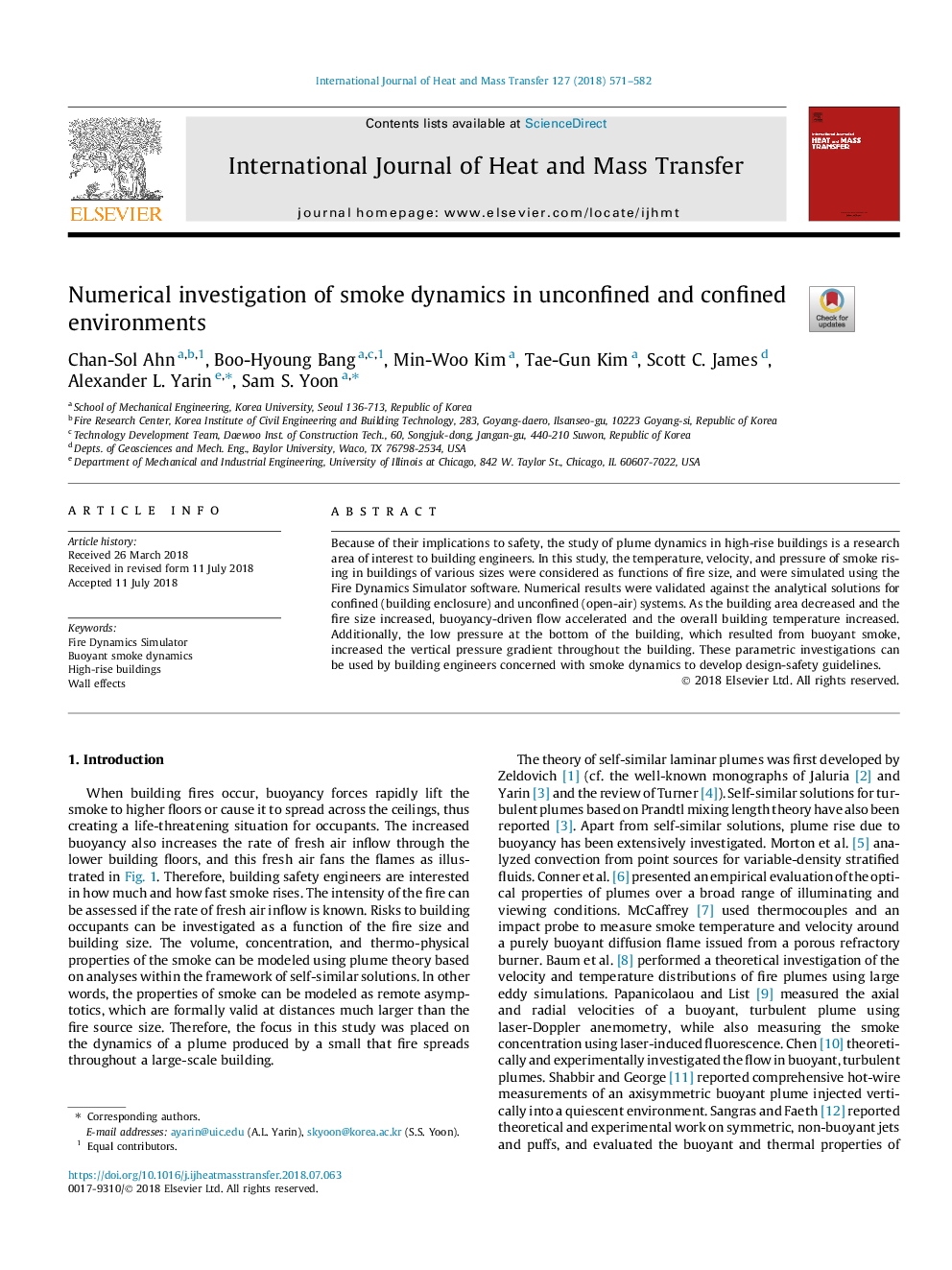| Article ID | Journal | Published Year | Pages | File Type |
|---|---|---|---|---|
| 7053695 | International Journal of Heat and Mass Transfer | 2018 | 12 Pages |
Abstract
Because of their implications to safety, the study of plume dynamics in high-rise buildings is a research area of interest to building engineers. In this study, the temperature, velocity, and pressure of smoke rising in buildings of various sizes were considered as functions of fire size, and were simulated using the Fire Dynamics Simulator software. Numerical results were validated against the analytical solutions for confined (building enclosure) and unconfined (open-air) systems. As the building area decreased and the fire size increased, buoyancy-driven flow accelerated and the overall building temperature increased. Additionally, the low pressure at the bottom of the building, which resulted from buoyant smoke, increased the vertical pressure gradient throughout the building. These parametric investigations can be used by building engineers concerned with smoke dynamics to develop design-safety guidelines.
Related Topics
Physical Sciences and Engineering
Chemical Engineering
Fluid Flow and Transfer Processes
Authors
Chan-Sol Ahn, Boo-Hyoung Bang, Min-Woo Kim, Tae-Gun Kim, Scott C. James, Alexander L. Yarin, Sam S. Yoon,
